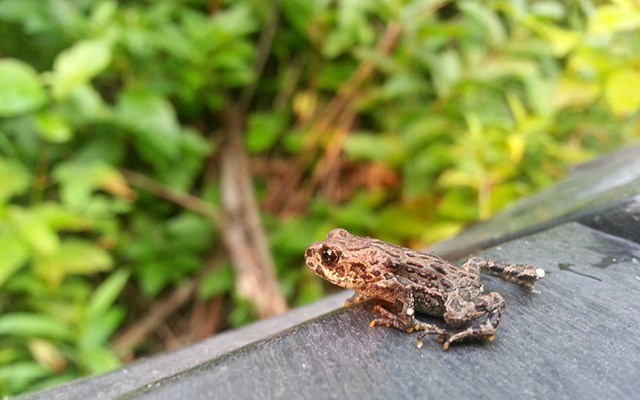
A massive swath of road in California was turned into an amphibian armageddon as hundreds of thousands of tiny toads crossed a highway in what witnesses described as a scene straight out of a horror movie. The unusual sight brought traffic to a near standstill, leaving drivers and biologists stunned at the scale.
As temperatures rise, toads begin migrating from their winter ponds and wetlands toward the hills, where they will lay their eggs. This year they were on a mission.
“We have never seen anything like it,” says Monika Hachtel, an amphibian biologist at the University of Bonn in Germany. She was also a witness to the toad migration and was shocked by the sheer numbers. “We are used to seeing individual frogs, but this was an entire swath that went for miles.”
The mass movement was likely caused by the warm weather, which led to the toads moving out of their hibernation sites and searching for water. According to local media reports, the swath of toads stretched about a mile-and-a-half across the highway and was about five feet wide.
While most of the toads made it across the road, some were unfortunately hit by passing cars. “It was kind of sad to see all those little toads disappearing,” Hachtel tells CNN. Amphibians are excellent gauges of environmental health, and their disappearance in pristine areas worldwide has scientists concerned about planetary conditions. Frogs and toads are susceptible because they have moist skin that allows environmental chemicals to pass directly into their bloodstream. Their young also lack a hard shell, which leaves them even more vulnerable.
Both frogs and toads are vital for their ecosystems and help balance the population of other animals. They are essential in the tropics, where they help keep the number of mosquitoes in check by feeding on them. A decline in frog and toad populations could spread diseases such as Zika and malaria.
Frogs and toads have many similarities, but their most significant difference is in their skin. Frogs have smooth or slimy skin that is moist, while toads have bumpy, dry skin. Frogs spend more time in water and are typically closer to it than toads, so their skin stays moist. On the other hand, toads spend more time on land and often travel farther away from water, so their skin dries up.
There are many different species of toads, and it can be difficult to tell the differences between them at a glance. However, some features that are useful in identification include a lack of a stripe down the back, non-enlarged toe pads, horizontal pupils, and enlarged parotoid glands behind the eyes. The Black Toad is found along the Southern Sierra Nevada Mountains, while the Yosemite Toad occurs at high elevations in the valleys and canyons of the Eastern Sierra Nevada Mountains. Both are similar in color, but the Yosemite Toad has a light dorsal stripe, and the Black Toad does not.


